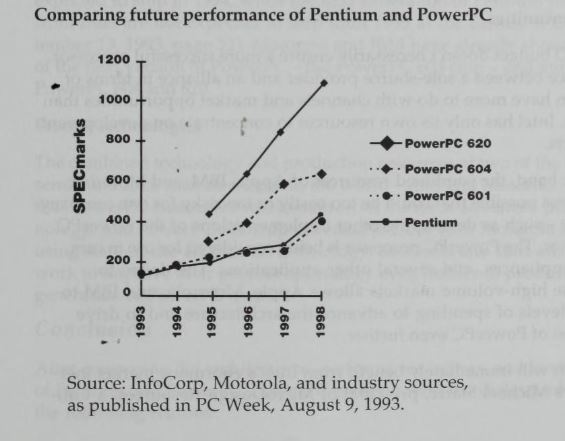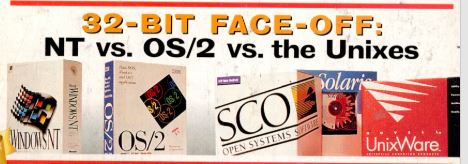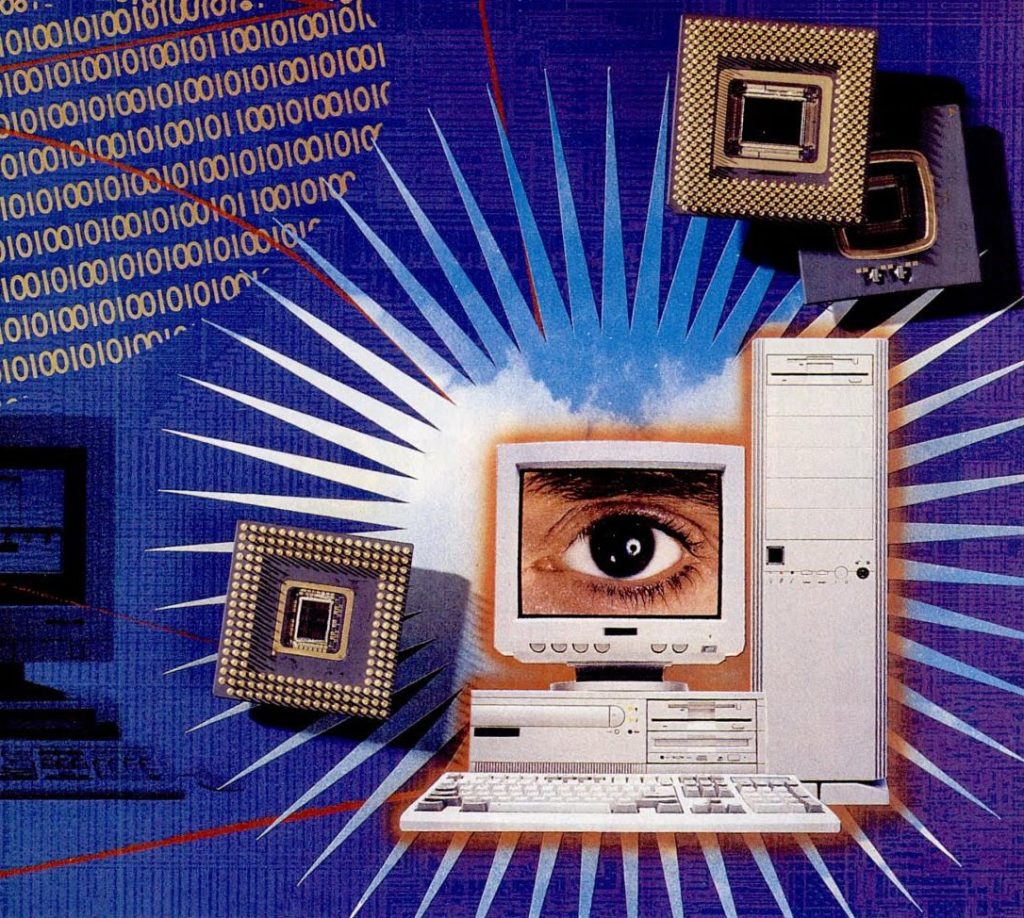
The Pentium processor, like the 68060 was the end of the line, there was nothing more that could be done for CISC, the future was RISC, and Intel along with Motorola had painted themselves into the corner, and the only way out was RISC. But both the i860 & 88010 failed to gain critical traction, paving the way for AIM to deliver on the PowerPC, leaving Intel behind.
Except it didn’t.
It’s always somewhat amusing and disappointing re-reading old stuff, looking for things and finding stuff like this.

Just as 1993 was the year that brought Windows NT out into the world, and the 32bit x86 wars really ignited. Who would have thought that only NT would remain out of these 5, and that ‘school kids project’ would have eclipsed them all?

There was something always ‘cool’ about the 80/90’s computer magazines and their shameless clip art, art packs. I wonder how much was physical cut outs and photographs vs being all digital? The shadows on the processor pins & heat sinks make me think that this was a physical layout.
For a fun call back, check out the May 31st 1994 issue of PC Magazine, PowerPC vs Pentium. It surprisingly has a lot of RISC reviews past page 120.
As luck has it, the 620 was delayed, and did not launch in 1994. It wouldn’t be pushed out until 1997, and by then the performance was lackluster, and I think this is what pushed IBM back into the POWER processor business. Making this the foreshadowing of abandoning Apple yet again with the G5 years later, despite IBM’s massive sales of PowerPC’s to Microsoft, Sony & Nintendo for various games consoles getting the volume that they desperately wanted to only later hand it over to AMD & ARM.

Unfortunately, on 1997 the 620 was just “too little, too late”…
On 1993, there was the Pentium running at 60–66 MHz; by 1997 the 300 MHz model was out but also the Pentium II model running at 66 MHz. It would be interesting to have the above benchmark graph updated with these new models…
The real game changer was the Pentium Pro. With its speculative out of order execution it paved the way for Intel to utterly dominate the microprocessor scene.
The P2/3 made it all the better, especially with those easy to upgrade CPU slots.
I’ve had quite a few non Intel machines over the years and all it makes you do is appreciate good compilers, good source code… And networking!
GCC on the PowerPC was always kind of lagging behind the IBM Xlc offering. I know Cygnus was always SPARC obsessed in that era and didn’t seem to push those barriers.
It would be interesting to see them bench, especially old gcc/egcs and Xlc. The hard part would be doing all the tests, where would you even find a 620?
Granted, Solaris might be on life-support but it’s still one of those 5 left. 🙂
JFYI:
https://www.nextplatform.com/2019/08/20/big-blue-open-sources-power-chip-instruction-set/
I was under the impression that this was going to play into the new Power stuff like Power9? It’s the stuff Google among others use, as people are silently (and quickly) shifting away from Xeon since they are all fundamentally flawed.